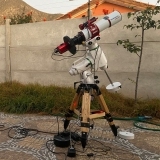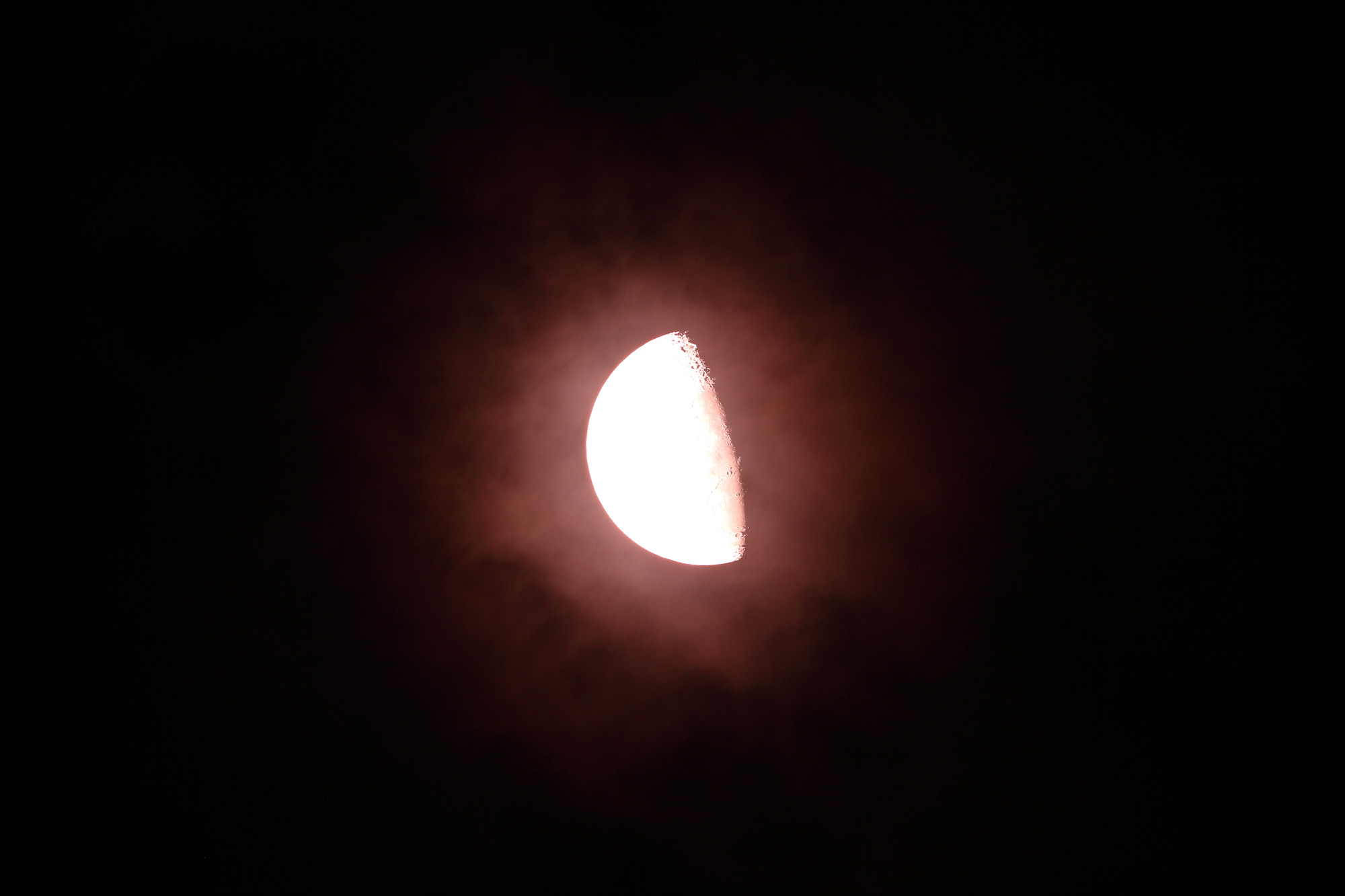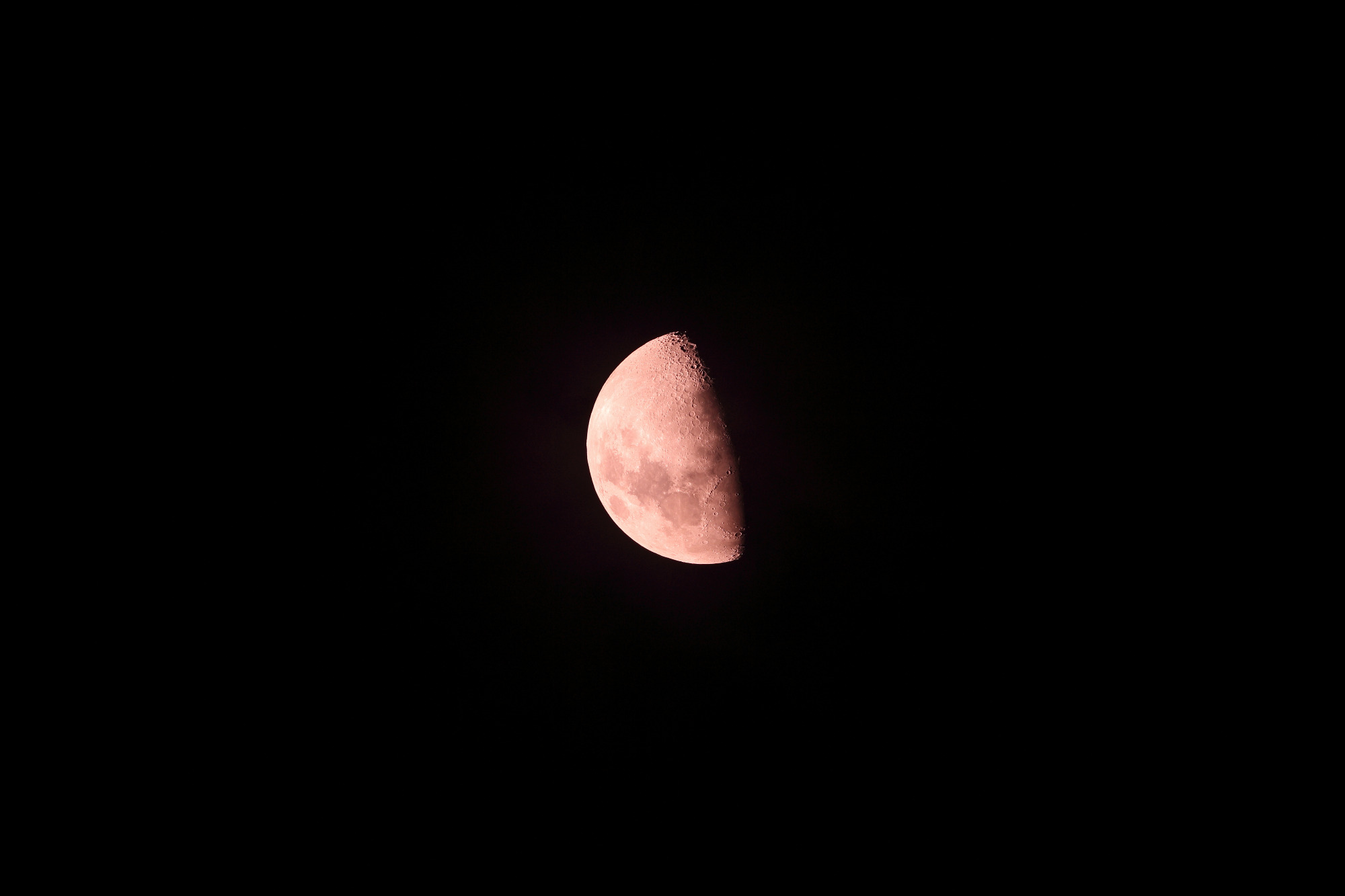INDI Library v2.0.7 is Released (01 Apr 2024)
Bi-monthly release with minor bug fixes and improvements
Canon DSLR exposure time question
- Wouter van Reeven
-
 Topic Author
Topic Author
- Offline
- Supernova Explorer
-

- Posts: 1957
- Thank you received: 420
Canon DSLR exposure time question was created by Wouter van Reeven
When I try to make a pic of the Sun it is unsharp. Darn, I forgot to focus. So I waited until tonight and aimed the telescope at the Moon. Without solar filter of course! I was bringing down the exposure time in the Capture tab and and the end took an image of 0.0025 seconds == 1/4000 sec. The DSLR log shows this nicely
[2019-04-13T21:04:07.098 CEST INFO ][ org.kde.kstars.indi] - Canon DSLR EOS 700D : "[INFO] Starting 0.00025 seconds exposure. "
[2019-04-13T21:04:07.098 CEST DEBG ][ org.kde.kstars.indi] - Canon DSLR EOS 700D : "[DEBUG] Starting exposure (exptime: 0.000251 secs, mirror lock: 0) "
[2019-04-13T21:04:07.098 CEST DEBG ][ org.kde.kstars.indi] - Canon DSLR EOS 700D : "[DEBUG] Mutex locked "
[2019-04-13T21:04:07.098 CEST DEBG ][ org.kde.kstars.indi] - Canon DSLR EOS 700D : "[DEBUG] Setting radio/menu widget iso: 1 (100) "
[2019-04-13T21:04:07.098 CEST DEBG ][ org.kde.kstars.indi] - Canon DSLR EOS 700D : "[DEBUG] Setting new configuration OK. "
[2019-04-13T21:04:07.099 CEST DEBG ][ org.kde.kstars.indi] - Canon DSLR EOS 700D : "[DEBUG] Setting radio/menu widget imageformat: 9 (RAW) "
[2019-04-13T21:04:07.099 CEST DEBG ][ org.kde.kstars.indi] - Canon DSLR EOS 700D : "[DEBUG] Setting new configuration OK. "
[2019-04-13T21:04:07.099 CEST DEBG ][ org.kde.kstars.indi] - Canon DSLR EOS 700D : "[DEBUG] Using internal bulb widget:eosremoterelease "
[2019-04-13T21:04:07.099 CEST DEBG ][ org.kde.kstars.indi] - Canon DSLR EOS 700D : "[DEBUG] Setting radio/menu widget eosremoterelease: 2 (Press Full) "
[2019-04-13T21:04:07.316 CEST DEBG ][ org.kde.kstars.indi] - Canon DSLR EOS 700D : "[DEBUG] Setting new configuration OK. "
[2019-04-13T21:04:07.317 CEST DEBG ][ org.kde.kstars.indi] - Canon DSLR EOS 700D : "[DEBUG] Exposure started. "
[2019-04-13T21:04:07.317 CEST DEBG ][ org.kde.kstars.indi] - Canon DSLR EOS 700D : "[DEBUG] Time left: 0 ms "
[2019-04-13T21:04:07.317 CEST DEBG ][ org.kde.kstars.indi] - Canon DSLR EOS 700D : "[DEBUG] Closing internal shutter. "
However, when I open the image in Canon Digital Photo Professional 4, AstroPixelProcessor or PixInsight they all claim that the exposure time was 0.1 sec. So now I wonder if the exposure time really was 0.0025 sec and the image info is wrong, or if the exposure time truly is 0.1 sec. Can anyone enlighten me?
Clear skies, Wouter
Please Log in or Create an account to join the conversation.
- Wouter van Reeven
-
 Topic Author
Topic Author
- Offline
- Supernova Explorer
-

- Posts: 1957
- Thank you received: 420
Replied by Wouter van Reeven on topic Canon DSLR exposure time question
but three out of ten look like this
All images have 0.1 sec exposure time in their image data. Is this expected behaviour of libgphoto2 (or a known bug) or am I doing something wrong?
Please Log in or Create an account to join the conversation.
Replied by Andrew on topic Canon DSLR exposure time question
When I imaged the 2017 Eclipse, I did not use EKOS. Instead I used Magiclantern and setup to swap in memory cards with different capture routines for the different phases. Partial>Diamond Ring>Totality>Diamond Ring>Partial. (Card 1>2>3>2>1)
Card 1 was setup to take an image every 30 seconds with the intervalometer settings
Card 2 was setup to take rapid burst of 2 bracketed image exposures 1/4000 & 1/60s
Card 3 was setup to take a repeating sequence of 15 bracketed images from 1/4000 up to 4 seconds. 1 stop increase per frame for HDR composition.
It worked out well for me, but not the most ideal setup, while mostly automated, there are manual steps when swapping the cards, and timing is everything. For that reason I will refer you to software some of my peers used, Eclipse Maestro
Enjoy the view!
P.S. Make yourself some filtered binoculars with baader solar film. Totality is safe to view with unfiltered binoculars if you are VERY careful of the timing and cease viewing before the end of totality. Eclipse Maestro will warn you when to replace your filters.
Please Log in or Create an account to join the conversation.
- Wouter van Reeven
-
 Topic Author
Topic Author
- Offline
- Supernova Explorer
-

- Posts: 1957
- Thank you received: 420
Replied by Wouter van Reeven on topic Canon DSLR exposure time question
But apart from that I do wonder about the exposure times of the images I took. I have checked the libgphoto issues on github and cannot find anything.
Please Log in or Create an account to join the conversation.
- Wouter van Reeven
-
 Topic Author
Topic Author
- Offline
- Supernova Explorer
-

- Posts: 1957
- Thank you received: 420
Replied by Wouter van Reeven on topic Canon DSLR exposure time question
sourceforge.net/p/gphoto/mailman/message/34428305/
and this blog post which I think is from the same author
baheyeldin.com/astronomy/using-canon-eos...lb-mode-gphoto2.html
The command line I used is this
gphoto2 --filename=Test_01.CR2 --wait-event=2s --set-config eosremoterelease=5 --wait-event=2s --set-config eosremoterelease=11 --wait-event-and-download=5s
With this I get an image with an exposure time set to 2 seconds. When I lower the second --wait-event argument to 0.1, I get an image with an exposure time of 0.1 sec. When I lower the value even more, the image exposure remains 0.1 sec. So it looks like gphoto2 is not capable of taking very short exposures. On the other hand, I tried the Canon EOS Utility software and got images of 1/100, 1/160, 1/250 and 1/500 seconds. This is a 1/500 sec image of the Sun taken today
So it looks like I cannot use Ekos for imaging during the Solar Eclipse. I will look into Eclipse Maestro next.
Please Log in or Create an account to join the conversation.
- Jasem Mutlaq
-

- Away
- Administrator
-

Replied by Jasem Mutlaq on topic Canon DSLR exposure time question
Please enable logging and attach the Ekos log.
Please Log in or Create an account to join the conversation.
- Wouter van Reeven
-
 Topic Author
Topic Author
- Offline
- Supernova Explorer
-

- Posts: 1957
- Thank you received: 420
Replied by Wouter van Reeven on topic Canon DSLR exposure time question
Cheers, Wouter
Please Log in or Create an account to join the conversation.
Replied by alacant on topic Canon DSLR exposure time question
HTH
Please Log in or Create an account to join the conversation.
- Wouter van Reeven
-
 Topic Author
Topic Author
- Offline
- Supernova Explorer
-

- Posts: 1957
- Thank you received: 420
Replied by Wouter van Reeven on topic Canon DSLR exposure time question
Please Log in or Create an account to join the conversation.
Replied by alacant on topic Canon DSLR exposure time question
It's an enable/disable toggle under 'options' on the dslr tab.
Leave the 700d on BULB with the dial at M.
HTH
Please Log in or Create an account to join the conversation.
- Jasem Mutlaq
-

- Away
- Administrator
-

Replied by Jasem Mutlaq on topic Canon DSLR exposure time question
This only affect CR2 files, the FITS files generated by INDI show correct time.
Please Log in or Create an account to join the conversation.
- Wouter van Reeven
-
 Topic Author
Topic Author
- Offline
- Supernova Explorer
-

- Posts: 1957
- Thank you received: 420
Replied by Wouter van Reeven on topic Canon DSLR exposure time question
However, I need to investigate more. Alacant has given me a few hints what config setting to change so I’ll give that a try. Thanks very much!
Please Log in or Create an account to join the conversation.



